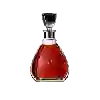
Domaine MadelocBanyuls Cirera
This wine generally goes well with beef and mature and hard cheese.
Wine flavors and olphactive analysis
On the nose the Banyuls Cirera of Domaine Madeloc in the region of Languedoc-Roussillon often reveals types of flavors of cherry, chocolate or prune and sometimes also flavors of cheese, non oak or microbio.
Food and wine pairings with Banyuls Cirera
Pairings that work perfectly with Banyuls Cirera
Original food and wine pairings with Banyuls Cirera
The Banyuls Cirera of Domaine Madeloc matches generally quite well with dishes of beef or mature and hard cheese such as recipes of romazava (madagascar) or crozet cheese with savoy diots.
Details and technical informations about Domaine Madeloc's Banyuls Cirera.
Discover the grape variety: Jurançon noir
Jurançon noir is a grape variety that comes from the Agenais region in southwestern France. It is a cross between malbec and folle blanche. Although it is quite similar to the white Jurançon, it is not the black form of the latter. Its bunches are compact and short, medium-sized and cylindrical-conical. Its berries are spherical-ellipsoid in shape. They are attached to short pedicels that are warty and strong. The skin is dark black and has a strong bloom. This variety has an average budding time and is hardy, vigorous and fertile. It gives a regular production, but it must be pruned short so that it does not quickly become exhausted. It fears grey rot, mildew, drought and grape worms. Jurançon Noir makes common, slightly alcoholic and lightly colored wines. Vinified as a rosé, it produces fruity and lively wines.
Last vintages of this wine
The best vintages of Banyuls Cirera from Domaine Madeloc are 2010, 2014, 2008, 2011 and 2007.
Informations about the Domaine Madeloc
The Domaine Madeloc is one of of the world's greatest estates. It offers 16 wines for sale in the of Banyuls to come and discover on site or to buy online.
The wine region of Banyuls
Banyuls wines come from the South-eastern Part of Roussillon, in the south of France, in the lower Pyrenees, a few kilometres from the Spanish border. These naturally Sweet wines are consumed both as an aperitif and as a dessert. They come in a wide range of hues, from GoldenGreen (Banyuls Blanc) to Amber (Banyuls Ambré) to the intense garnet of the standard Banyuls Rouge. Unusually among the natural sweet wines of France, all Banyuls wines are made primarily from Grenache grapes of various colors.
The wine region of Languedoc-Roussillon
Languedoc (formerly Coteaux du Languedoc) is a key appellation used in the Languedoc-Roussillon wine region of southern France. It covers Dry table wines of all three colors (red, white and rosé) from the entire region, but leaves Sweet and Sparkling wines to other more specialized appellations. About 75% of all Languedoc wines are red, with the remaining 25% split roughly down the middle between whites and rosés. The appellation covers most of the Languedoc region and almost a third of all the vineyards in France.
The word of the wine: Carpentry
A powerful red wine with a dense, rich body and a tight tannic structure.














